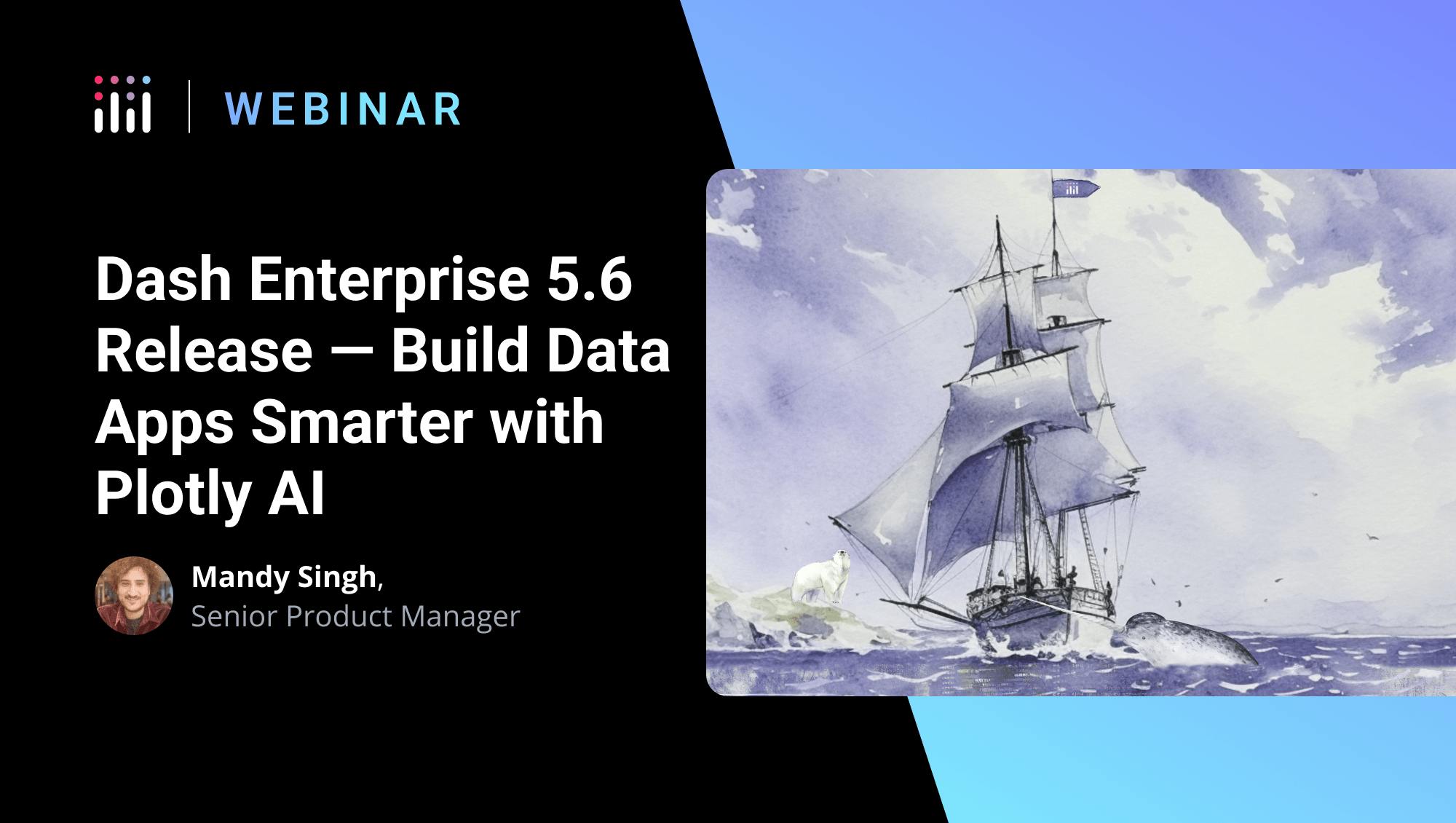Dash Enterprise 5.6 release

Meet the Speaker

Mandy Singh
Mandy Singh is a former Senior Product Manager at Plotly.
In this video, we walk through the major updates included in the Dash Enterprise 5.6 release. These updates are aimed at helping teams scale data applications efficiently, manage cloud costs, and improve data access across the organization.
One of the most critical challenges for large-scale Dash deployments is ensuring that data apps get the CPU and memory they need, especially when multiple apps are competing for resources. Dash Enterprise 5.6 introduces a new monitoring dashboard that gives both app authors and administrators full visibility into system and app-level resource usage.
- Real-time monitoring of CPU, memory, and other metrics per app
- Historical trend data to support capacity planning
- Early issue detection to reduce downtime and performance lags
- Helps prioritize business-critical apps without manual guesswork
To reduce cloud spend and improve infrastructure flexibility, the new release also introduces VM parking. This allows admins to pause and resume virtual machines with a single click, optimizing runtime and operational costs, particularly during nights and weekends.
- Start, stop, or restart VMs without manual intervention
- Supports version upgrades and maintenance scheduling
- Cuts unnecessary cloud costs by up to 70%
- Gives teams tighter control over when infrastructure is active
The release also includes new features around data connectivity, expanding support for enterprise-grade data sources. This includes built-in connectors for Azure Data Lake and AWS Redshift, as well as options to define custom or proprietary sources.
- Native integration with Azure Data Lake and AWS Redshift
- Extended SQL database support for broader compatibility
- Define your own custom data sources per organizational need
- Data access is centralized across apps and workspaces
Dash Enterprise 5.6 is designed to keep teams productive, reduce infrastructure waste, and ensure smoother access to critical data.
Watch the video to follow along and see how these features work in action.


